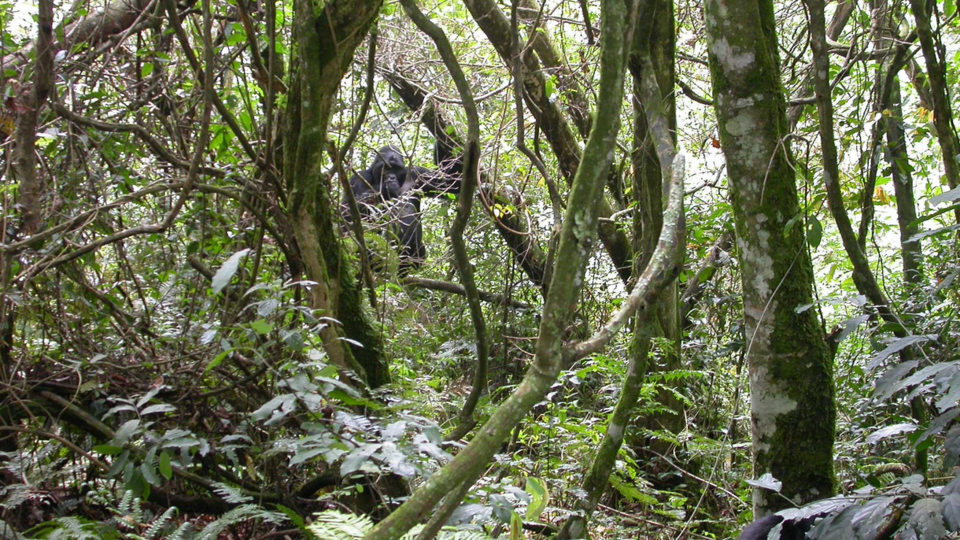Science News
Women and Conservation in Uganda

We are celebrating Earth Day all week with articles about how we can address our changing planet. Monday, we posted this video about Tizezew Shimekach’s work in her native Ethiopia, tackling forest conservation and women’s empowerment at the same time.
Women and conservation issues are intertwined beyond Ethiopia. This past November, the Academy’s Meg Lowman and several other scientists signed a proclamation in Nature to get more women’s voices at the table for conservation decisions. And in a supporting article in the Huffington Post, Lowman described how women are often on the front line of these issues, “…for many generations women have been the stewards of nature—as water-carriers, gardeners, firewood gatherers—and in turn have first-hand knowledge about the depleting supplies of natural resources in many relatively harsh environments.” Very true to what Shimekach describes in Ethiopia.
It’s also at the center of graduate student Alix Blair’s recent work in Uganda. Studying women who live on the borders of Bwindi National Park, she wanted to know: What do women have to say about the impact of conservation on their lives? And how can they help inform conservation decisions?
The large park, a UNESCO World Heritage Site, serves as a biodiversity hotspot and holds an IUCN Category 2 ranking. It also provides habitat to hundreds of species, including the critically endangered mountain gorilla. The gorillas bring tourists to the park, delivering a huge boost to Uganda’s national economy. Local people see the benefits of the tourists mostly in terms of goats. Goats act as a way of distributing a percentage of park fees to local village leaders, who then distribute the livestock to their people.
The area around the park has a very high poverty rate as well as very high population density, and that’s not unusual. High poverty rates around biodiversity hotspots are documented as a trend worldwide, Blair says. Most residents are subsistence farmers, with small plots that can be very distant from each other. “The women do most of the work,” Blair says, “traveling between the farms, gathering firewood and water. It all falls to the women. Women are the natural resource managers, the ones primarily moving in the natural world.”
Blair spent two months traveling long distances to meet these women. Along with a translator, she interviewed 36 women to understand their lives, what they thought about the park, and how conservation in Bwindi affects them.
Blair found that while the women appreciate the economic value that mountain gorillas bring (via tourists) to their villages, they otherwise tend to resent the park’s primates. One woman, through the translator, made the metaphor of gorillas being like raccoons in our country (i.e., a pest). Gorillas living in the park can cross the park boundary and easily wreak havoc in farms, with entire crops lost. “Currently in Uganda, there’s no compensation if farms are destroyed,” Blair says.
On the other hand, Blair found that the women greatly value the park itself. “80 percent of the women I surveyed find value in the park.” Their reasons include the rain the forest brings, the water it retains, and the “good winds and air” it delivers.
A large number of women Blair interviewed reported that there isn’t enough firewood for themselves and their communities. And the women need firewood not only for cooking, she explains, but also for the basic need to boil water to make it safe to drink. The women did not report taking firewood from beyond the park boundary, but Blair says that there is documentation showing that the park boundary is slowly moving back due to loss of trees at the park edges.
Firewood and education for their children topped the women’s needs, and many didn’t receive goat profits coming indirectly from tourists visiting the park. It sounds like the village leaders may not be distributing the livestock as intended. Besides, Blair says, “the goats model isn’t serving local women if education and firewood are most important values to them, in their own words. Revenue from tourists could be redirected to education stipends or a sustainable forestry project to provide firewood.”
Beyond that policy change, Blair sees a need for “reframing the story of conservation so it is meaningful at a local level.” The women conceptualize the need for the park as only for gorilla conservation, but that could change to put the women closer to the conservation efforts. They already understand the benefits of the park in terms of climate and precipitation, so why not put the emphasis on “a systems understanding and not charismatic megafauna approach to valuing biodiversity?” she asks. “It would be more sustainable for protecting the park.”
Finally, Blair discovered that most of the women would like to have a voice in their communities for conservation and other important decisions, but that they don’t see it changing anytime soon. A few did think that changes could be made if their daughters received an education and if there were more available role models of women in leadership positions.
Women, natural resources, conservation, education—all intertwined in rural Uganda and around the world. From the Women and the Environment Foreword, United Nations Environment Programme:
As the majority of the world’s poor, women play decisive roles in managing and preserving biodiversity, water, land and other natural resources, yet their centrality is often ignored or exploited. This means that a chance for better management of those resources is lost, along with opportunities for greater ecological diversity, productivity for human sustenance and economic development. Moreover, while environmental degradation has severe consequences for all human beings, it particularly affects the most vulnerable sectors of society, mainly women and children.
Image: Duncan Wright/Wikipedia